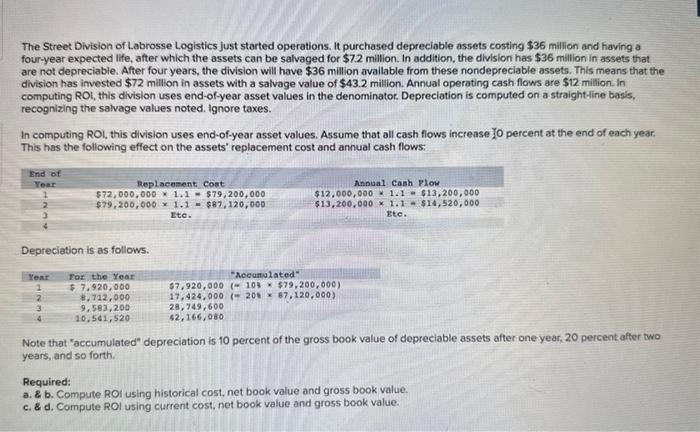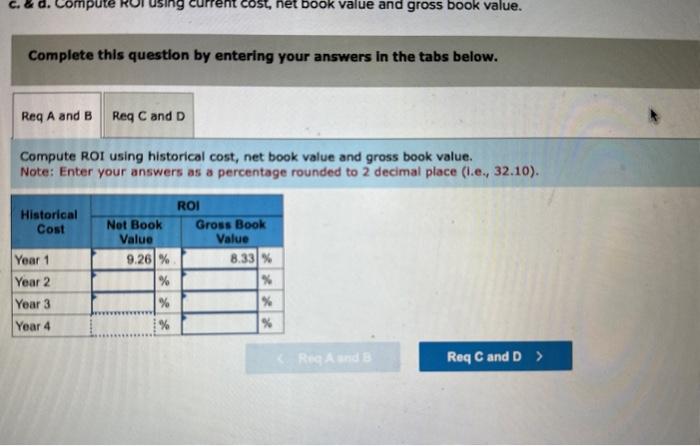Answered step by step
Verified Expert Solution
Question
1 Approved Answer
The Street Division of Labrosse Logistics just started operations. It purchased depreciable assets costing $36 million and having a four-year expected life, after which



The Street Division of Labrosse Logistics just started operations. It purchased depreciable assets costing $36 million and having a four-year expected life, after which the assets can be salvaged for $7.2 million. In addition, the division has $36 million in assets that are not depreciable. After four years, the division will have $36 million available from these nondepreciable assets. This means that the division has invested $72 million in assets with a salvage value of $43.2 million. Annual operating cash flows are $12 million. In computing ROI, this division uses end-of-year asset values in the denominator. Depreciation is computed on a straight-line basis, recognizing the salvage values noted. Ignore taxes. In computing ROI, this division uses end-of-year asset values. Assume that all cash flows increase 10 percent at the end of each year. This has the following effect on the assets' replacement cost and annual cash flows: End of Year Replacement Cost $72,000,000 1.1 $79,200,000 $79,200,000 1.1 Etc. $87,120,000 Depreciation is as follows. Year For the Year 1 2 3 4 $7,920,000 8,712,000 9,583,200 Annual Cash Flow $12,000,000 1.1 $13,200,000 x 1.1 Etc. $13,200,000 $14,520,000 "Accumulated" $7,920,000 (-10% 17,424,000 (-20% $79,200,000) 87,120,000) 28,749,600 10,541,520 42,166,080 Note that "accumulated" depreciation is 10 percent of the gross book value of depreciable assets after one year, 20 percent after two years, and so forth. Required: a. & b. Compute ROI using historical cost, net book value and gross book value. c. & d. Compute ROI using current cost, net book value and gross book value. Compute using current cost, net book value and gross book value. Complete this question by entering your answers in the tabs below. Req A and B Req C and D Compute ROI using historical cost, net book value and gross book value. Note: Enter your answers as a percentage rounded to 2 decimal place (i.e., 32.10). Historical ROI Gross Book Cost Not Book Value Value Year 1 9.26% 8.33 % Year 2 % % Year 3 % % Year 4 % % Req A and B Req C and D > Required: a. & b. Compute ROI using historical cost, net book value and gross book value. c. & d. Compute ROI using current cost, net book value and gross book value. Complete this question by entering your answers in the tabs below. Req A and B Req C and D Compute ROI using current cost, net book value and gross book value. Note: Enter your answers as a percentage rounded to 2 decimal place (i.e., 32.10). ROI Current Cost Net Book Gross Book Value Value Year 1 Year 2 Year 3 de de de % % % % % % Year 4 % % < Req A and B Req C and D
Step by Step Solution
There are 3 Steps involved in it
Step: 1
To compute the Return on Investment ROI using both historical cost and current cost well need to calculate the values using net book value and gross book value StepbyStep Calculation 1 Historical Cost ...
Get Instant Access to Expert-Tailored Solutions
See step-by-step solutions with expert insights and AI powered tools for academic success
Step: 2

Step: 3

Ace Your Homework with AI
Get the answers you need in no time with our AI-driven, step-by-step assistance
Get Started


